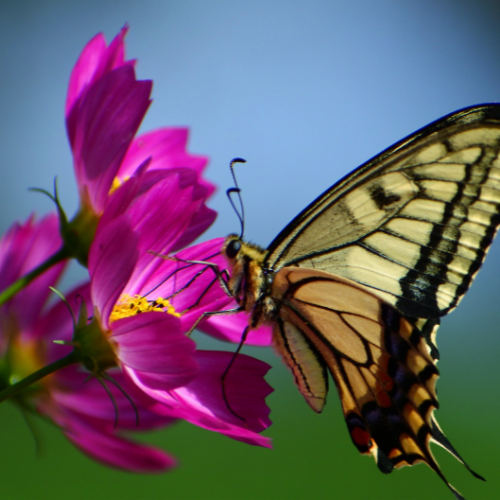
Micro-ponds for biodiversity in the garden
F. MattierShare
As we know, our gardens, whether small or large, benefit from promoting greater biodiversity.
Each additional species adds complexity to your small ecosystem and stabilizes it.
A species that is too solitary can proliferate (aphids, slugs, crane flies, etc.), but the presence of its predators or other competing species keeps it in check. The more complex a system is, the more stable it is. And the harder it is for a single species, whether animal or plant, to occupy all the space!
For years, permaculture has emphasized one principle: there is not really a habitat rich in diversity, because it is the "interfaces" between habitats where species are most numerous: the edge of a forest, the bank of a pond, the surface of the water, the foot of a hedge… It is the borders between two habitats that should be maximized.

And what is missing in our gardens is precisely the boundary between water and land, or water and air.
Even in a very small garden or vegetable patch, the presence of a tiny water point is enough to explode the number of species present.
A micro-pond attracts toads and frogs, even newts. The toads roam the garden at night in search of slugs and insects.
The birds will come to drink and you will thus do them a great service. They will thank you by nibbling on the caterpillars on your cabbages!
Aquatic plants bloom abundantly, like water mint or the purple loosestrife, and attract bees and bumblebees of all species, which will go pollinate your zucchinis or your fruit trees!
To prevent the water from "stagnating" (eutrophication), you will introduce some oxygenating plants (Ceratophyll, Najas or Myriophyll) and add some daphnia and ostracods to populate the environment, and especially some water lice that will eat the fallen leaves.
And why not floating plants, like Azolla or water lentils? If they proliferate too much, you can remove a few handfuls to place at the base of your vegetables!

This water point, even tiny, will attract all kinds of dragonflies that will lay their eggs there, and whose larvae will eliminate mosquito larvae.
The adults will capture flies and various flying insects. And observing them will delight you!

A simple plastic bin, or even a large bucket, buried in the heart of the vegetable garden or the garden, is more than enough.
You can use the Zollabox Démarrage to bring it to life, then install the plants you like, submerged or emerged.
Just make sure to keep the water level up during the heatwave, and consider placing a branch or a small board in it to prevent a hedgehog or a daring bird from drowning, unable to get out of the water on its own.

"Your micro, or mini, or even large pond will bring you a life you never suspected, useful for your garden and vegetable patch, and especially fascinating to observe as it evolves through the seasons, for both young and old."
